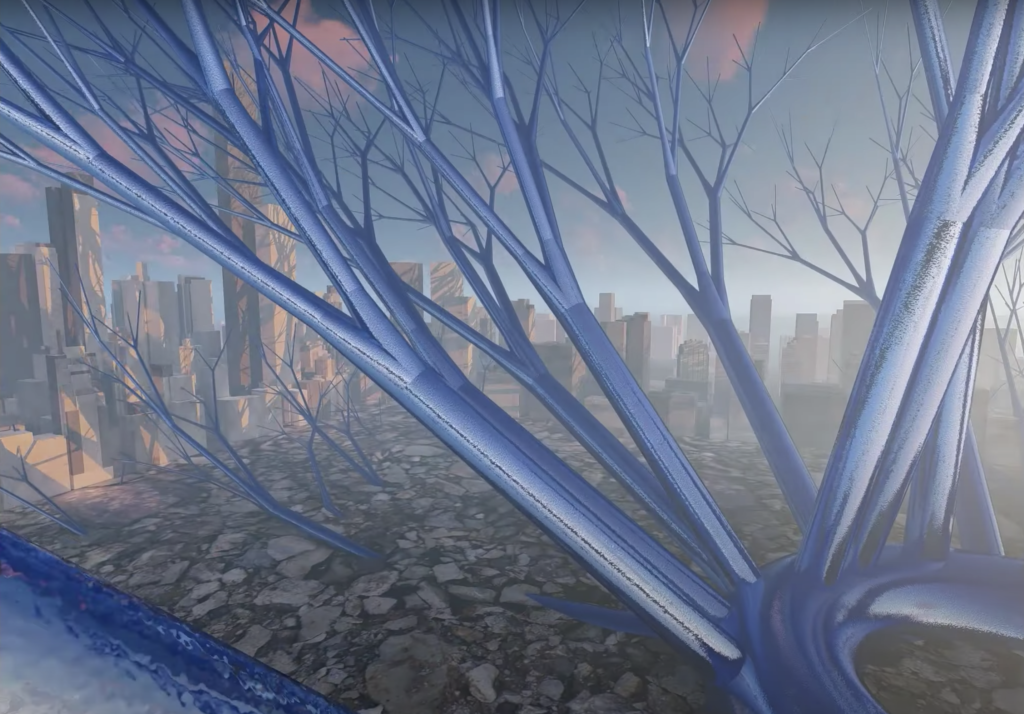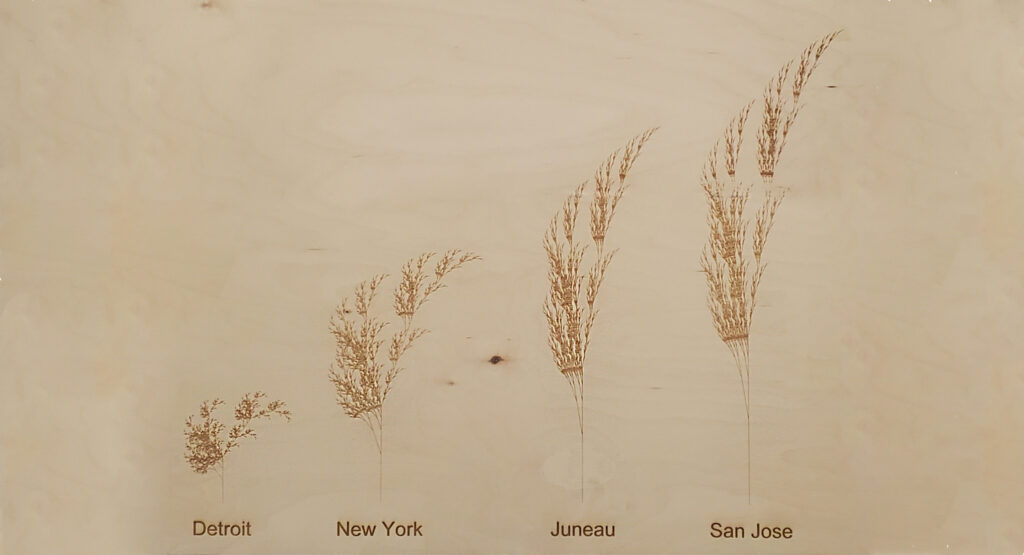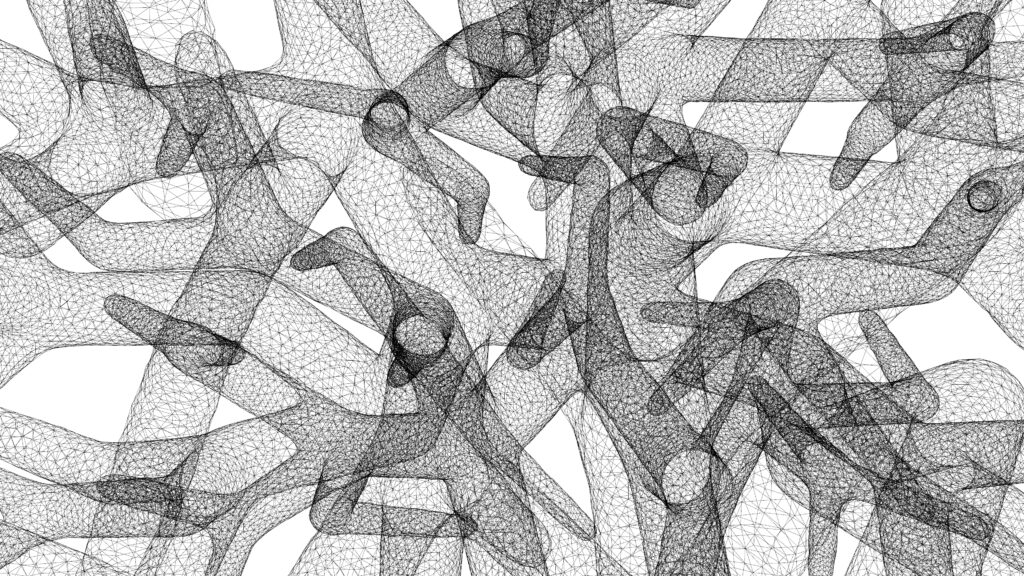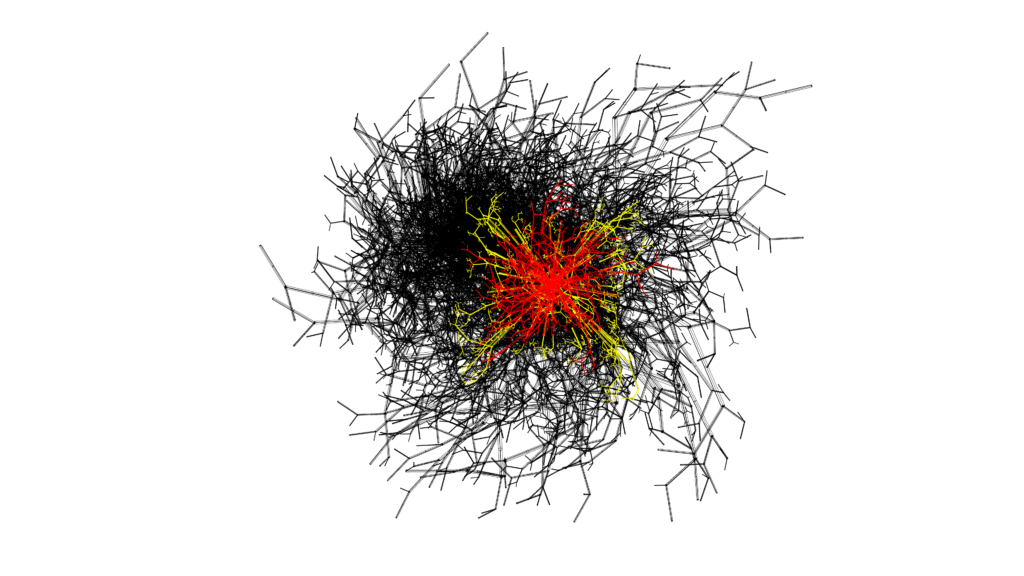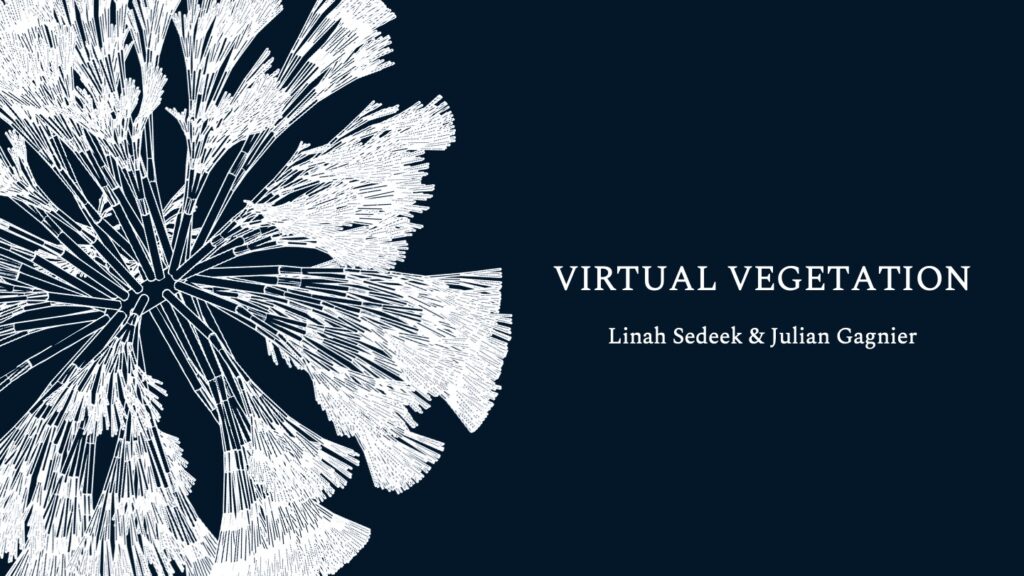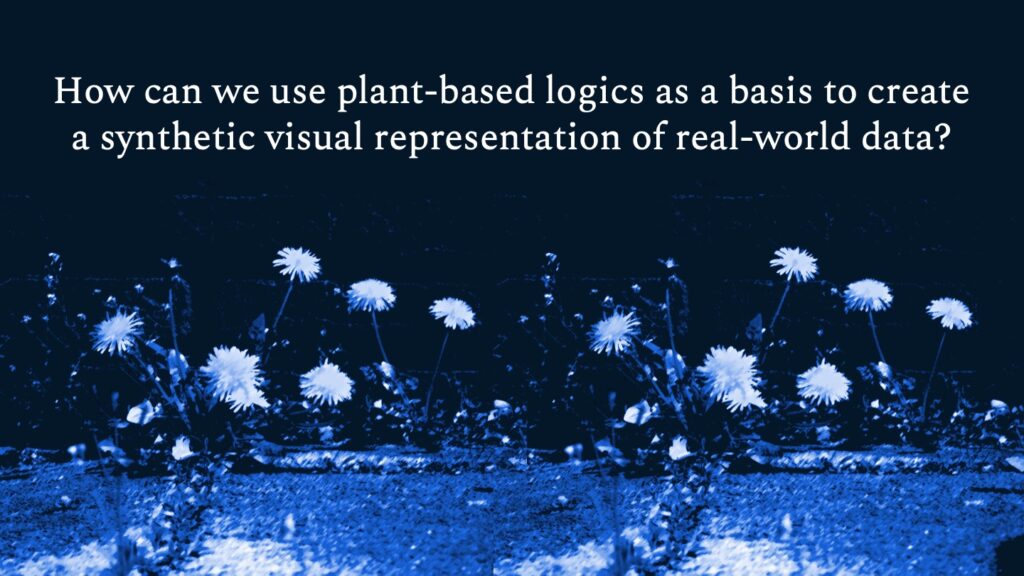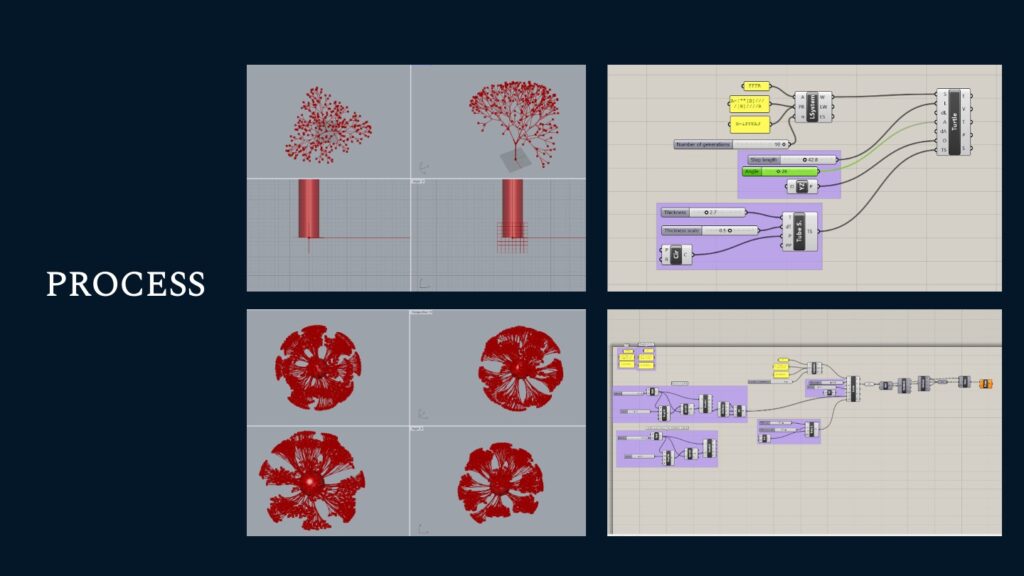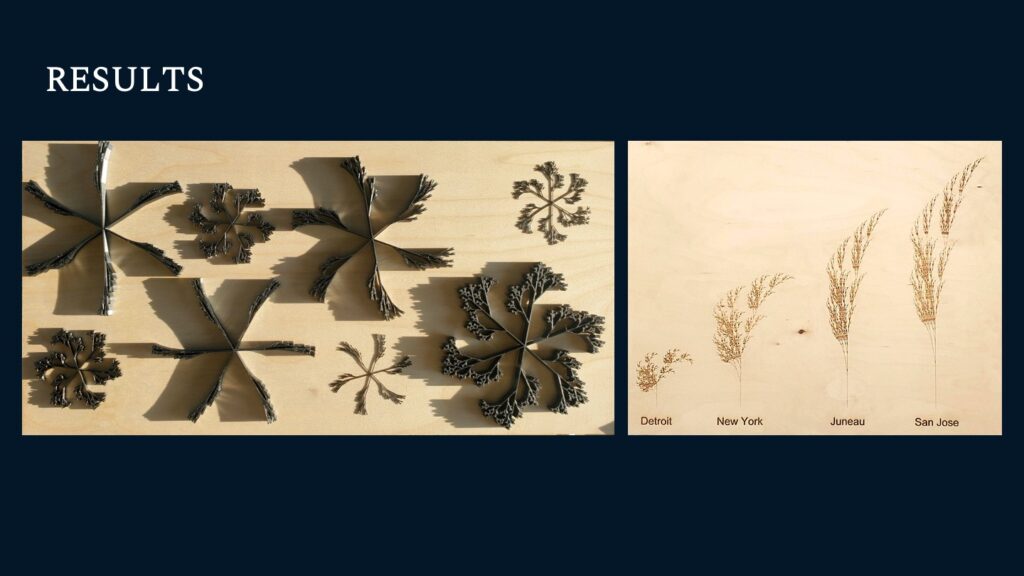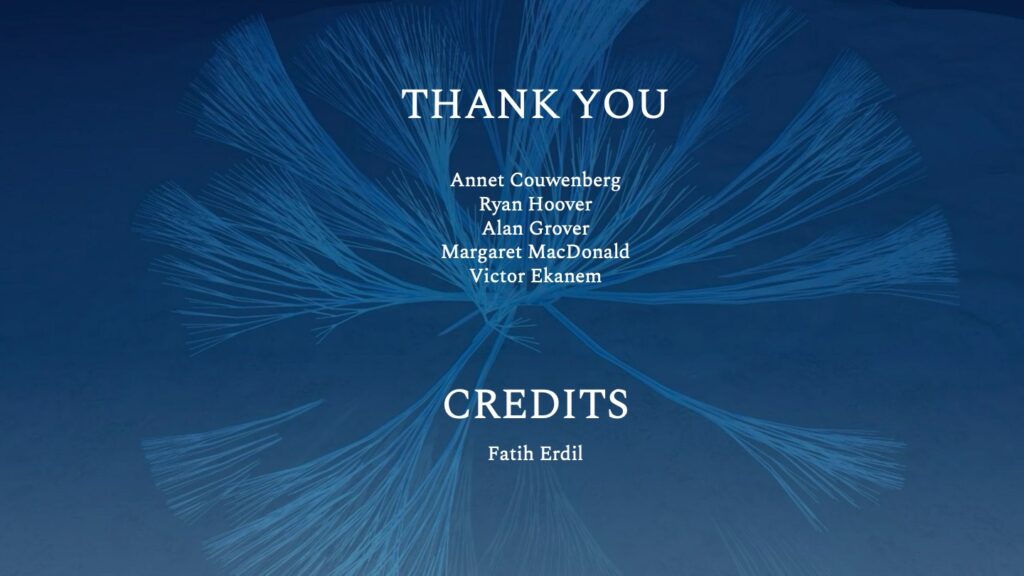Linah Sedeek, Architectural Design, 2022
Julian Gagnier, Architectural Design, 2022
Linah Sedeek and Julian Gagnier are senior Architectural Design majors. Linah’s process consists of switching between digital and physical methods of working to create hybrid outputs. She uses parametric design and weaving to play with opacity and translucency, openness and closeness in her work. As Julian was not trained in any physical mediums except woodcraft, his focus on the exploration of digital mediums and representation is born from a fascination with the bespoke, craft-centric elements involved in a digital creation.


ENHANCE_NONE
Project Overview
Virtual Vegetation is an exploration in the reconstruction of real-world data into abstract visual representations. Taking precedence from artists such as Vera Molnar and Refik Anadol, this project explores using both generative algorithms and animation techniques. The generated outputs compare digital accessibility in select U.S. cities. By creating synthetic plant-like forms, we visualize the differences between these variables. One central parameter is used to generate each plant, and variables such as climate, materiality, and urban landscape are used to inform the environment representing each location. These are then brought in to simulate growth and movement using an animation platform.
In their script, the length of each branch is correlated to median household income, and the angle at which the branches spread is representative of the percentage of households without internet. Though not included in many of their outputs, their script also correlated the percentage of households with internet access to the number of initial branching points.
Process
Through the investigation of Grasshopper and parametric design, Linah and Julian explored multiple avenues of generative design, algorithms, and logics. They began by researching and implementing the scripts of others to build an understanding of parametric and generative design, finally landing upon L-Systems as their logic of choice. They then expanded upon the original scripted logic by incorporating data visualization techniques and input parameters. They then used the generated forms to produce various final products, including 2D drawings, 3D prints, and animations.
Presentation
Learn More
Watch our full video animated here.
Learn about the designers!
Linah Sedeek: lsedeek@mica.edu / Creative Process Journal / Instagram
Julian Gagnier: Creative Process Journal / Instagram


